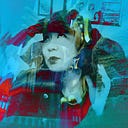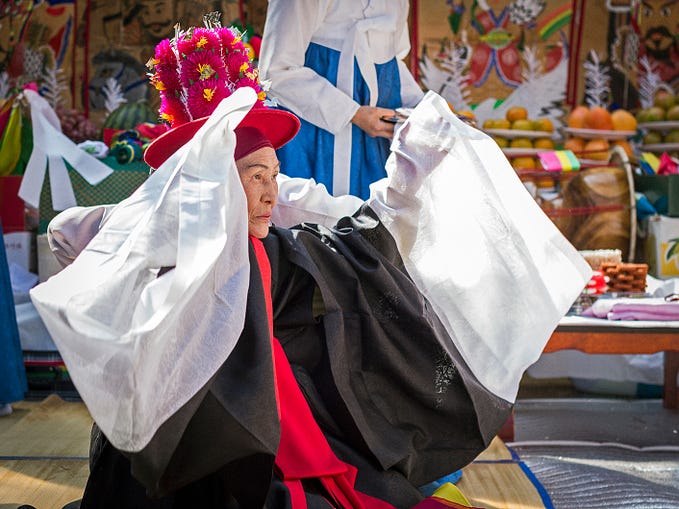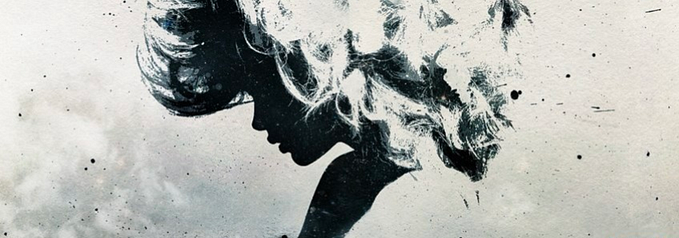
Meet the Nigerian designer weaving African textiles with Renaissance art—including some of Black Panther’s amazing looks
A chat with Walé Oyéjidé, the man behind Ikiré Jones, a Philadelphia-based fashion line with a truly global aesthetic.
Walé Oyéjidé’s unique designs merge and meld the aesthetics of vibrant African textiles and the art of Renaissance Europe with the design traditions of European haute couture — creating wearable art that sparks a conversation about cultural inclusivity. Most recently, Oyejide’s fashions were seen on the big screen and red carpet in Marvel’s Black Panther.
We asked to Oyéjidé tell us about the ideas that informed the creation of Ikiré Jones, what the world’s response has been so far, and what’s next.

You are both Nigerian and American. How did growing up between cultures influence you and the designs you produce with Ikiré Jones?
I was born and raised in Nigeria, in a city called Ibadan. A bit like the Philadelphia to Lagos’s New York, it’s not the huge, giant city nearby that the whole world has heard of. It’s a bit more suburban. I traveled back and forth the US as a child, as many immigrants do, because my parents were always looking for better job opportunities.
I also lived in the United Arab Emirates with my mother for a couple of years. I was probably about 12 to 14, and it was the early 1990s, right before Dubai became the monstrosity that we know now. It was a fascinating place: at the time, they imported people for everything because they were wealthy enough to do so. So there was a huge expatriate class, and I went to an international school with a bunch of kids who were English, American and European — a little bubble of kids from all over the world.

Living this kind of life between cultures can leave a kid feeling like you have no real anchor. For me, going back to Nigeria was like, well, I’m not quite Nigerian enough, and in the US, not American enough. It’s a familiar conundrum for anyone with an upbringing that straddles different cultures. Over time, I learned to be confident in my amalgamation of experiences as part of who I am. But I’d have liked to be able to tell myself at 15 that it’s okay to be so culturally mixed. Now I’m happy to talk about my experience so that maybe people can be less hesitant to embrace those with complex cultural backgrounds.
This speaks to my work, which is ultimately about pushing people to be more accepting and inclusive. Ikiré Jones happens to do this through the medium of clothing, from the perspective of somebody of African descent. But the overarching idea is to make room for perspectives that haven’t historically been heard. There is Asian culture, African culture, Arab culture — so much out there that society hasn’t given space and a voice to. The more perspectives we get to hear, the more we’re exposed to the myriad stories of human culture, the more we’re all enlightened and enriched. It’s a mission of mine to remind people that elegance comes in different forms, and there is enough room for all of them to shine.

Were you always interested in fashion?
I was actually interested in music first. After we moved to Alabama, during my high school years, I played guitar in indie rock bands, then did hip-hop, even putting out a couple of instrumental albums after college. I quickly realized that the starving artist life was as described: not very lucrative. It’s the pressure on those of us whose parents are immigrant doctors. Standard story, basically. “What is our child doing?” Not to mention, I wanted to be able to do nice things for my then-girlfriend (now wife), and the Z-list musician salary wasn’t exactly cutting it.
I decided I’d go to law school — it seemed like a smart thing to do for people who want to be secure and responsible adults. I figured, it’s fine on paper: I did moderately well, and ended up getting a gig as a civil defense attorney at a big firm in Philly. Perfectly adequate for those who write their lives that way — but two and a half years later, I found it to be soul-crushing work for anyone who has a scintilla of creativity to them.


How did you make the leap from law to fashion?
When you’re a lawyer, you wear suits! By the way, lawyers generally don’t really dress well — that’s the TV aspirational version of us. Most of us just show up to court in whatever won’t get us yelled at by a judge. My job was uninspiring, and fashion ended up being the the vehicle through which I expressed my frustration. I turned to retail therapy, spending exorbitant amounts of money on brands that we’re all familiar with, and writing a menswear blog. I ended up developing some notoriety as the one peacocky lawyer at the office, to the point that in 2010, I was chosen as one of Esquire magazine’s best-dressed men.
Finally it occurred to me that I perhaps could use fashion as a vehicle to break out of law, and instead make something that’s relevant to me. I thought, “Well, I like clothing, I love all this Italian, European stuff. But how do I do it my way? How do I make it relevant to the huge swaths of people who are not being spoken to by these brands?”
By this time, my partner and I were about to have our child, and I thought, Why don’t I actually do what I would love to do, and have a relationship with my daughter? So a little over five years ago, I broke out of the legal industry to become a stay-at-home father and designer.


How does one go about setting up a studio and manufacturing clothes — sourcing materials, finding tailors and so on?
I had no background in the industry, and I can’t sew, so a law-school friend introduced me to her brother, Sam Hubler. Sam is a tailor — which, at our age, and in our part of the world, is a rare thing. We live in an era where few people intimately know a craft. It’s unusual for any of us to be true artisans. Instead, we expect things to be delivered overnight by Amazon, and materialize in our palms without any true understanding of how they are made.
Now my business partner, Sam is that rare artisan, and watching him work has been like witnessing magic from the front row every day for the past few years. He’s of both Cambodian and Caucasian descent. In that way we share a similar immigrant narrative, but through a different lens.
Sam had his own brand making high-end bespoke clothing. He started out by advising me on how to create a brand, but then offered to make the clothes as well. He’s been indispensable in manifesting my vision of what our brand should produce.
What would you say is the message behind your designs?
The idea behind my designs is reflected in the name: Ikiré is a town my dad grew up in, Jones is my wife’s last name: the brand is a marriage of Western and African culture. Textiles are a way to reflect who I am, and the idea that I (like many of us) am so globally influenced. It also reflects how I’m trying to reconcile the fact that I’m pulled in different directions. For example, when you say, “This is African-American,” what does that mean? We are all such a melting pot of things.
I’m also asking, “Who owns what? What is African, what is European?” I think this creates cognitive dissonance in people that they find both fascinating and uncomfortable. They think, “Well, I’m a white man and so maybe I shouldn’t be wearing this.” Which is funny, because if you and I thought this way — “I can’t wear this fashion because there are no black people or Asians in this magazine” — would leave us naked and alone in the world.
People of African or Asian or Middle Eastern descent wear clothes descended from European culture. That’s the standard. So why should I always be expected to compromise and fit into your world, and why should you be scared to take a step into mine? I want to reassure people: “Really, it’s okay for you to acknowledge and enjoy what I have to bring to the world. This is how we learn from each other and get better — by appreciating the best things our various cultures have to offer.”

Do think your work sparks a fear of appropriation for those who may want to wear it — especially in the current cultural environment, where people feel very comfortable calling each other out on perceived political incorrectness?
That’s a huge problem, especially in the fashion industry. I think where people go wrong with appropriation is by claiming ownership without taking the time to research, respect and acknowledge where things come from. But I think that fear can go too far. Are you not going to eat sushi or tacos because you’re not Mexican or Japanese?
Having said that, I realize this is a complex fight. We, being people of color (for lack of a better phrase), have the right to complain about appropriation because we don’t have privilege in other ways. But at the same time, any culture grows by letting people enjoy and accept its best aspects. I think we have such a fear because we’ve been robbed for so long historically that now we’re trying to defend and hold on to the wonderful things we produce. I understand the emotional aspect of that stance. I just prefer to take a more nuanced view.
Until now, I’ve used all black models, which some have seen as controversial and confrontational, even though beautiful. I do it because we’re not represented, and I want black people to be seen in their beauty and elegance. But I’m not in any way opposed to broadening the ethnic makeup of my models. My work isn’t intended to be exclusive at all. Quite the opposite. If relevant to the story being told, I am open to displaying my art on any human canvas that will further the narrative, regardless of ethnicity. I want Ikiré Jones to have a strong cultural perspective, but be welcoming to all. I’m constantly working to address this.

Why do you use specifically Renaissance artwork in your designs?
Say you walk into the Louvre, and it’s gorgeous. You love it. But people of color generally don’t see themselves represented there. I think it’s not something we think about actively when we’re younger, but I wonder what that does to the psyche: here’s what’s considered the pinnacle of art, this wonderful giant white marble statue, this giant painting by Caravaggio or Da Vinci. But I don’t see me in it. What does that do to a young person’s perception of what beauty is?
Then maybe back in the corner of this lovely museum, there’s a little Asian section, a little African section with the masks and so on. It’s beautiful work, but it’s not necessarily placed at the same level. Literally, it’s in the basement. And it’s dark. We kind of internalize the subversive message that although people from my culture may have art, it’s “primitive” and not to be displayed up there in the light.
So I’m asking, what happens when you take what the world considers the pinnacle of high art, and inject yourself into it, for political and cultural reasons? People of color were present in that history anyway: we just weren’t included in the paintings. Or when we were, we were displayed as subservient. But what if we inserted ourselves there? What if, when kids of color walk into these museums, they can think, “Oh yeah, of course I would be here. Why wouldn’t I belong?”
I’ve had the fortune to have a few pieces in museums, for example the Philadelphia Museum. My daughter calls it “Daddy’s museum.” At the age of five, that’s the world she lives in now. She lives with the expectation that she also owns a space in the pantheon of beauty. If you create a world where kids see themselves at the highest level, then it just becomes what they aspire to, and beyond.


What’s the response you get to your work?
Often people of African descent will say, “That’s gorgeous, because although it is presented as an example of high art, I see myself represented in it.” I also have people of European descent say things like, “That’s fascinating, because that’s what I know — but it’s a twist on what I know.” It’s taking something that’s hundreds of years old, and giving it a new twist. There’s really nothing new under the sun, but there are new ways to talk about old things.
I want people to see it as a marriage of equals from both sides, inclusive of the best of both. What I make is a love letter to both European art and the boldness of textiles that one expects to find on the vast African continent.

You created a capsule wardrobe for Marvel’s Black Panther. What was this experience like — and did rubbing elbows with Hollywood give you new thoughts about what you’ve done so far and where you want to go next with Ikiré Jones?
Well, we should start with the humbling fact that I did not actually rub elbows with any celebrities. While Chadwick Boseman was doing a contractually obligated walk-through at the premiere, I walked up to him to introduce myself. I’m pretty sure he mistook me for a random fan, and not the designer of some of his wardrobe. Giving a TED talk was cool, but I’m still working on achieving my life goal of becoming best friends with Lupita Nyong’o.
The experience of creating a wardrobe for the film was exciting, and the past few months have been something of a surreal train ride I’m hoping I don’t have to get off any time soon. However, as fantastic as the opportunity to be associated with Black Panther has been. It’s been important to me to keep it in perspective and not let it define my work. I have no interest in being known as just “that brand that did some Black Panther stuff.”
To me, the work Ikiré Jones is doing in the realm of increasing awareness around issues that affect marginalized people — including, in the near future, the refugee crisis — is just as important, if not more so. I hope we continue to get more fantastic opportunities like Black Panther so that we can, in turn, divert that attention to meaningful work that can impact and steer society in the right direction.
To see Walé Oyéjidé’s impromptu collaborative fashion shoot and film with three Masai herdsmen in Arusha Tanzania, along with TED Fellows Christian Rodriguez and Joshua Roman, read “In rural Tanzania, a surprising collision of cultures and craft.”

The TED Fellows program hand-picks young innovators from around the world to raise international awareness of their work and maximize their impact.









